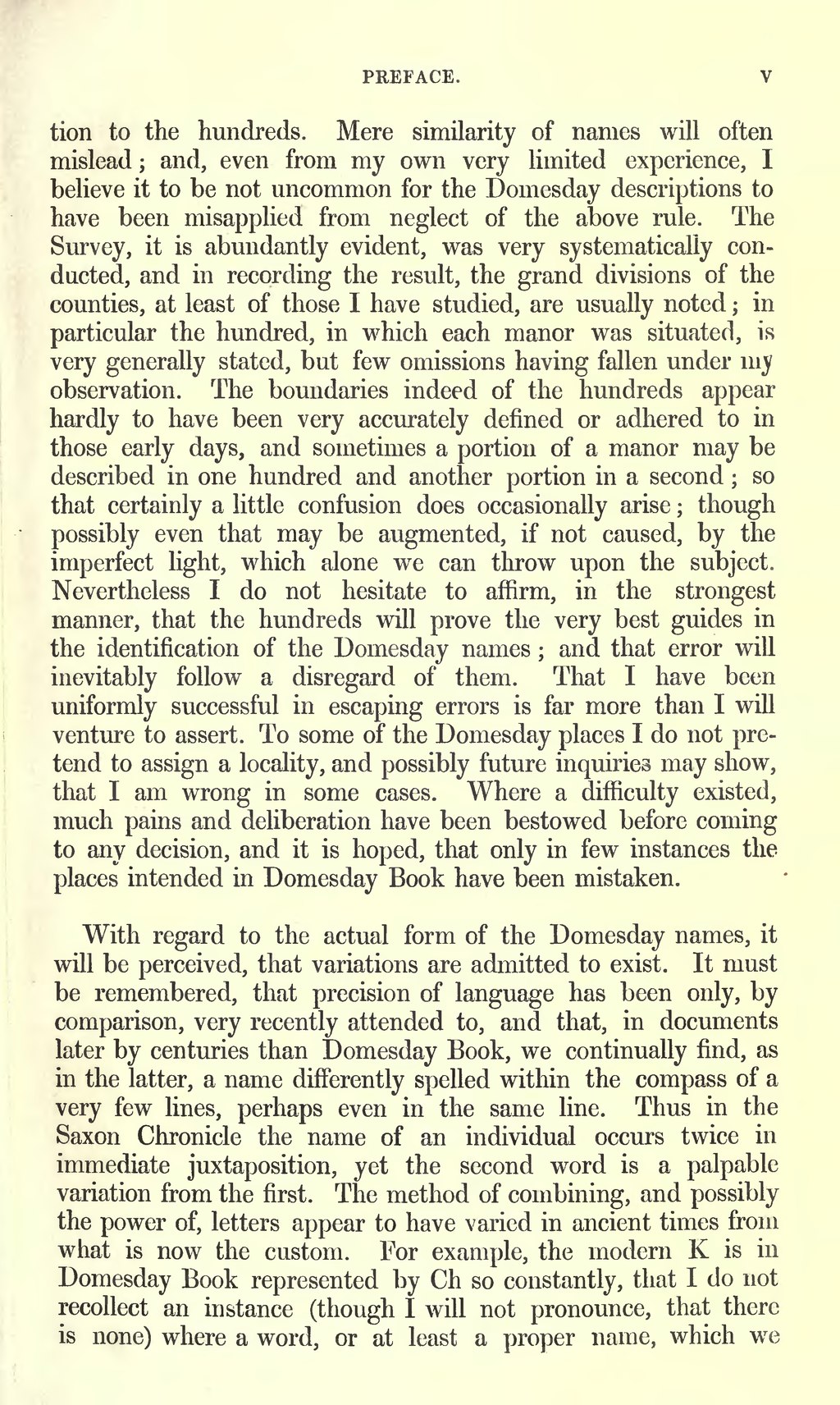tion to the hundreds. Mere similarity of names will often mislead; and, even from my own very limited experience, I believe it to be not uncommon for the Domesday descriptions to have been misapplied from neglect of the above rule. The Survey, it is abundantly evident, was very systematically conducted, and in recording the result, the grand divisions of the counties, at least of those I have studied, are usually noted; in particular the hundred, in which each manor was situated, is very generally stated, but few omissions having fallen under my observation. The boundaries indeed of the hundreds appear hardly to have been very accurately defined or adhered to in those early days, and sometimes a portion of a manor may be described in one hundred and another portion in a second; so that certainly a little confusion does occasionally arise; though possibly even that may be augmented, if not caused, by the imperfect light, which alone we can throw upon the subject. Nevertheless I do not hesitate to affirm, in the strongest manner, that the hundreds will prove the very best guides in the identification of the Domesday names ; and that error will inevitably follow a disregard of them. That I have been uniformly successful in escaping errors is far more than I will venture to assert. To some of the Domesday places I do not pretend to assign a locality, and possibly future inquiries may show, that I am wrong in some cases. Where a difficulty existed, much pains and deliberation have been bestowed before coming to any decision, and it is hoped, that only in few instances the places intended in Domesday Book have been mistaken.
With regard to the actual form of the Domesday names, it will be perceived, that variations are admitted to exist. It must be remembered, that precision of language has been only, by comparison, very recently attended to, and that, in documents later by centuries than Domesday Book, we continually find, as in the latter, a name differently spelled within the compass of a very few lines, perhaps even in the same line. Thus in the Saxon Chronicle the name of an individual occurs twice in immediate juxtaposition, yet the second word is a palpable variation from the first. The method of combining, and possibly the power of, letters appear to have varied in ancient times from what is now the custom. For example, the modern K is in Domesday Book represented by Ch so constantly, that I do not recollect an instance (though I will not pronounce, that there is none) where a word, or at least a proper name, which we
